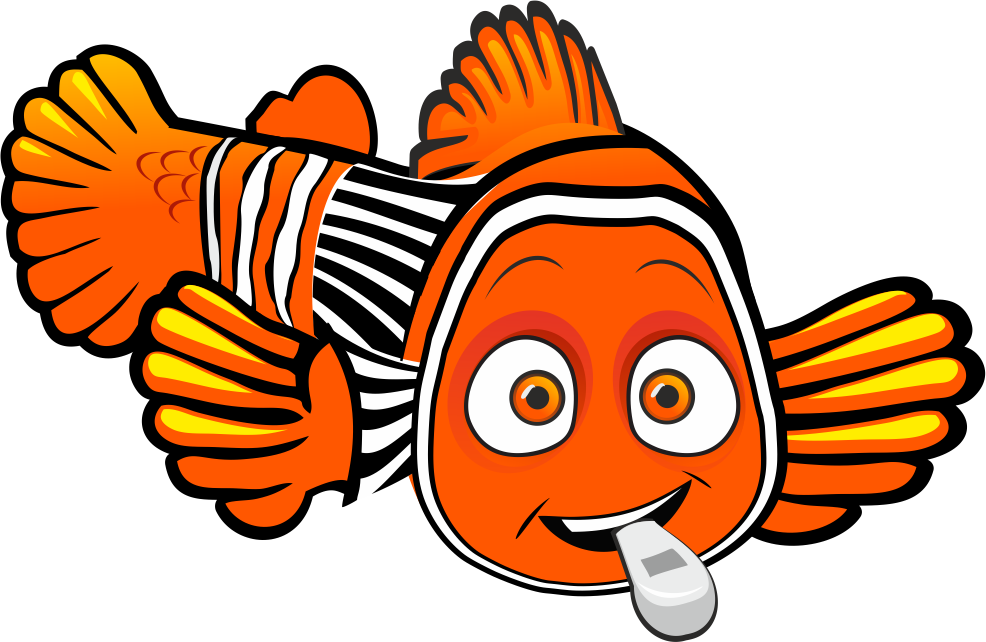Basic Facts About Platies
| Scientific Family: | Poeciliidae |
| Number of Platy Species Types: | There are two common species of Platy, however they have been cross bred into many different variations with many different color forms, making it difficult to tell the true difference in species. |
| Average Life Span: | Most platies will live to be about 3 years old but have been known to live up to 5 years. |
| Typical Size: | Platies are relatively small fish, and generally stay beneath 3 inches in length. They are smaller cousins of the sword tails and both males and females reach about the same length. |
| Colors: | There are many color variations of the freshwater platy and they range in coloration from orange, to blue, to yellow and red. Some platies have been bred to have distinct patterns across their bodies ranging from speckles to black fins. One of the most popular variations of platy is the Mickey-Mouse platy, which has three circles on the caudal fin shaped like, you guessed it, the famous mouse. |
| Native To: | Platies are native to freshwater streams and ponds in Mexico and other parts of Central America. Wild platies also may look very different to those found in stores and are generally not nearly as bright. If wild platies had the same coloration as domestically bred platies, they could become a quick snack in the wild. |
| Water Conditions Needed: | Temperature: 69-80°F PH Level: Platies prefer slightly alkaline water and a PH range between 6.5 and 8. |
| What Do Platies Eat?: | Platies are omnivores meaning they’ll eat both vegetation and meaty foods. In the wild, they’ll eat small crustaceans, plants and insects. In the home aquarium, it’s best to provide a wide range of foods ranging from brine shrimp, to flakes to ensure a healthy platy. |
| Fish-Keeping Experience Level: | Platies are some of the easiest aquarium fish to keep and do not require much maintenance due to their low bio-load. With the variety of colors, their peaceful nature and their ease of breeding. They make excellent fish for beginners. |
| Minimum Tank Size: | Platies can survive in aquariums as small as ten gallons, however we would recommend a 20 gallon tank if you’d like to keep more than three or four platies. |
| Tank Accessory Requirements: | Given that platies are slow top water swimmers and peaceful fish, it’s great to include several decorations or plants within the aquarium so as to give them adequate places to feel sheltered. If you’re planning on breeding platies, we would recommend floating plants to give the fry several places that they can hide while they grow. |
| Compatibility – Other Fish: | Platies are peaceful livebearers, meaning that they do well in a peaceful community tank. Great tankmates for Platies include other livebearers, such as swordtails, mollies and guppies as well as small tetras, such as the Neon Tetra or Serpae tetras. |
| Compatibility – Plants and Corals: | We recommend keeping your Platies in a planted tank. Plants such as java fern, Bacopa or variations of Rotala or Hygrophilia make excellent tank mates for platies. Additionally, top water floating plants provide fantastic cover for females giving birth and smaller fry. |
| Compatibility – Do not Keep With These Species: | We would recommend avoiding larger, more aggressive fish for platy tankmates. Fish such as Oscars or other South and Central American cichlids will bully and potentially eat platies. Additionally, African Cichlids require different water chemistry and are far too aggressive to be housed with platies. |
| Can you breed them? | Platies are some of the easiest fish in the aquarium trade to breed. Since the females give birth to live young, it’s important to keep them with fish that won’t eat them if you want the babies to survive. |
| Fun Fact: | Platies are in the same family as swordtails! Females of both species look very similar to one another. |
| Cost: | The great thing about platies are that they’re relatively inexpensive. Many stores will carry several varieties of platies for around $1.99 to $2.99. |

How will a Platies behave in your aquarium?
Platies are some of the most peaceful fish that you can keep in your home aquarium. As top-water swimmers, they prefer to hang near the surface of the tank, rarely swimming more than a few inches below the water line. Females will be a bit fatter than males, especially if they’re pregnant. While they’re slow swimmers and not terribly active in home aquariums, their color variety make them attractive to most hobbyists.
How to acclimate your Platy to your fish tank?
Platies can be acclimated by the floating method, detailed below. As Platies are very hardy fish, they are easy to acclimate to your home aquarium.
Floating Method:
Step 1: Place the bag with your Platies in your aquarium & cut off the lights. While they likely had the light on in the pet store, keeping them close to the lights of your tank may unintentionally heat the water in their bag more than you wanted to.
Step 2: Let the bag float for 10-15 minutes to reach the same temperature as the tank.
Step 3: Cut a small hole in the bag and allow some of the water from your aquarium to flow in until it makes up roughly half of the water in the bag. Allow the bag to continue to float for about 5 more minutes, this will allow the Platies to ease into the water parameters of your tank
Step 4: Release the Platies into your tank!
Which Species Are Best To Pair With Your Platies?
- Small Tetras, such as Lemon Tetras, Rummynose Tetras or Cardinal Tetras
- Guppies or other livebearers such as mollies or swordtails
- Bristlenose Plecostomus
- Cory catfish
Most Common Types of Platies
- Red Wag Platies
- Mickey-Mouse Platies
- Blue-Wag Platies
- Sunburst Platies
Ohfishal Platy Fish Tank Set Up
This is our ultimate checklist for a set up for platies. Below is everything you need for a great habitat for your platies! Of course, you can do this with less parts, or different parts, but this is our all-in ohfishal recommendation. This set-up will run you around $205 (market prices will vary).
- Fish Tank, Light, and Filter – 20 Gallon Aqueon Starter Kit – $130
- Species
- Fish – 4 Platies of whatever colors you choose! ($8-12, at your local fish store). 6 Cory Catfish, albino or bronze corys will work great (~$20-$25 at your local fish store), 6 Neon Tetras ($12-18 at your local fish store)
- Plants – Dwarf Water Lettuce ($4), Java Fern ($5), Small Driftwood ($10-15)
Frequently Asked Questions about Platy Fish
Platies go well with other livebearers and small tetras. Great tank mates include Neon Tetras, Swordtails & Mollies! For bottom feeders, Cory Cats or Bristlenose Plecos are excellent tank mates.
Platies will generally live for about three years, though some have been known to live up to 5 years.
Platies are very easy to breed. They are livebearers that give birth to free-swimming fry. If you intend to raise them, be sure to include floating plants in your tank to provide cover!
Platies are some of the most affordable fish in the aquarium trade, ranging from $1.99 to $2.99 on average.
Platies can grow up to about three inches long, though most stay fewer than 2.5 inches.
